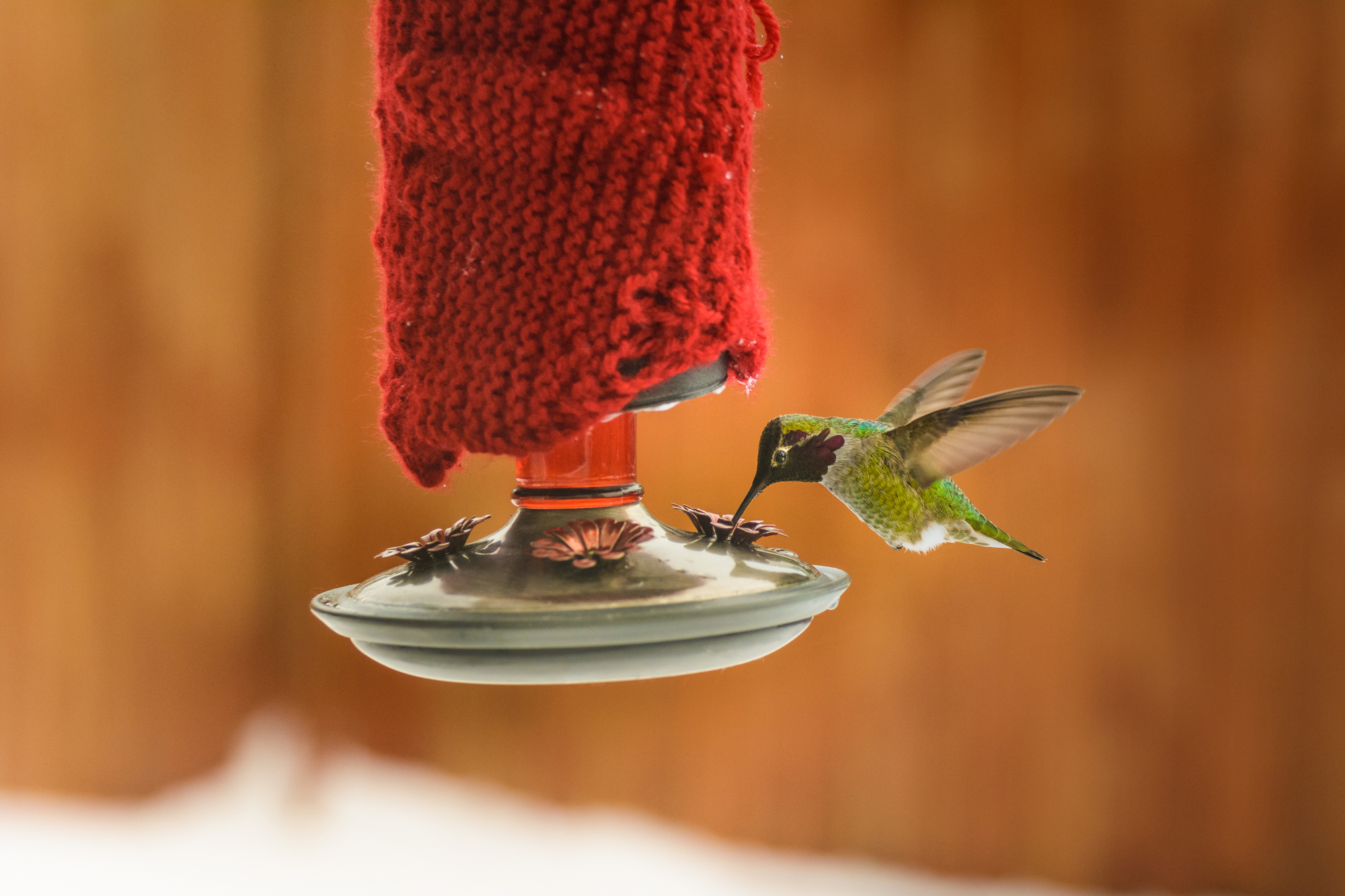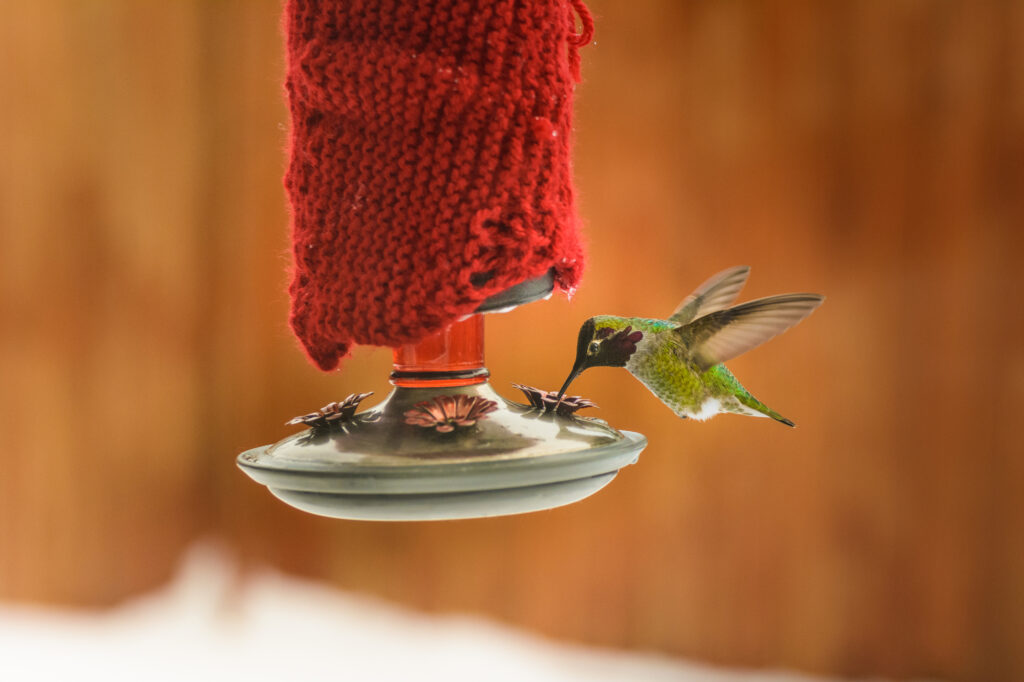For a lot of people, hummingbirds are a sure sign of spring. Many species will return to the same feeders from years previous and fill gardens and outdoor areas with their bright flashes of color.
If you’re looking to attract hummingbirds to your own backyard, you’re probably wondering “how do hummingbirds find feeders?”
Here are some key factors in understanding their behavior and preferences for food sources, as well as tips for troubleshooting your own outdoor setup.
Do Hummingbirds See Color?
Yes! According to a 2013 story from the National Audubon Society and BirdNote, hummingbirds’ eyes have heightened sensitivity to the colors in the red and yellow range, while muting colors like blue.
For this reason, feeders are often red and yellow, and commercially manufactured hummingbird food has historically been dyed red. But many bird enthusiasts find food dye a big concern.
However, a 1991 article quoted U.S. Fish and Wildlife Service experts saying there is no evidence that commercial hummingbird food with artificial coloring is dangerous for birds.
Since then, there hasn’t been overwhelming evidence to support either side, but most agree that adding food coloring to food is, at best, unnecessary. Flower nectar isn’t red, and most feeders already provide all the color needed to attract hummingbird species.
Can Hummingbirds Smell?
It’s a commonly mistaken fact that hummingbirds don’t have a sense of smell.
A 1982 study reported that while “the sense of smell in most birds is considered to be relatively unimportant,” black-chinned hummingbirds do have a sensory system for the element of smell.
What’s more: A 2021 report also found that hummingbirds can smell certain chemicals associated with danger. In the study, researchers mixed sugar water with insects that signaled risk—including honeybees and harmful ants.
The hummingbirds avoided ant-derived chemicals but had no reaction to the honeybee scent, leading researchers to believe that the hummingbirds could smell the chemicals.
How Do You Get Hummingbirds To Come To Your Feeder?

The ideal time to begin preparing for hummingbirds’ arrival is usually in early May—when they begin their migration route.
Wondering where to place your hummingbird feeder? It’s typically best near nectar-rich flowers or in a shady spot away from windows.
Perhaps the most important aspect of attracting hummingbirds to your yard is providing a suitable habitat in addition to a feeder.
Make sure you have planted native plants that provide a source of food throughout the year (both food and bugs) and adequate tree or shrub cover where hummingbirds can lay their eggs. What plants best fit your home’s climate varies by state, so check with local sources before planting.
A water source may also have a positive impact on the environment for hummingbirds your yard provides.
Why Are Hummingbirds Not Coming to My Feeder?
You’re seeing them in your garden or yard, but—despite your best efforts—they’re not interested in your backyard hummingbird feeder.
There could be a few reasons for this: Perhaps you have a dirty feeder or spoiled/incorrect nectar.
One of the reasons for keeping a feeder in the shade is that warm hummingbird food spoils after a few days. Additionally, untouched feeders can develop mold or bacteria that are not good for birds.
Make sure to wash it with soap every few weeks and replace any uneaten food. It’s also important to not wash your feeders with bleach, as it can be harmful to birds if not correctly rinsed off, according to a California-based animal hospital.
Finally, consider your sugar-to-water ratio. Most hummingbird food recipes call for one part sugar to four parts water. If your hummingbird food is short on sugar, it could be a less pleasant alternative to regular plants for your feathery backyard friends.
Too much sugar isn’t good either.
When Are Hummingbirds Most Active?
Hummingbirds are most active during daylight hours. While you may notice them occasionally hunting down bugs in the dark, they typically rest their daily routines at night.
Hummingbirds don’t sleep, but rather enter a hibernation-like state called torpor (TOR-per). This reduces heart rate and body temperature, allowing them to conserve energy by significantly reducing their sky-high metabolism.

